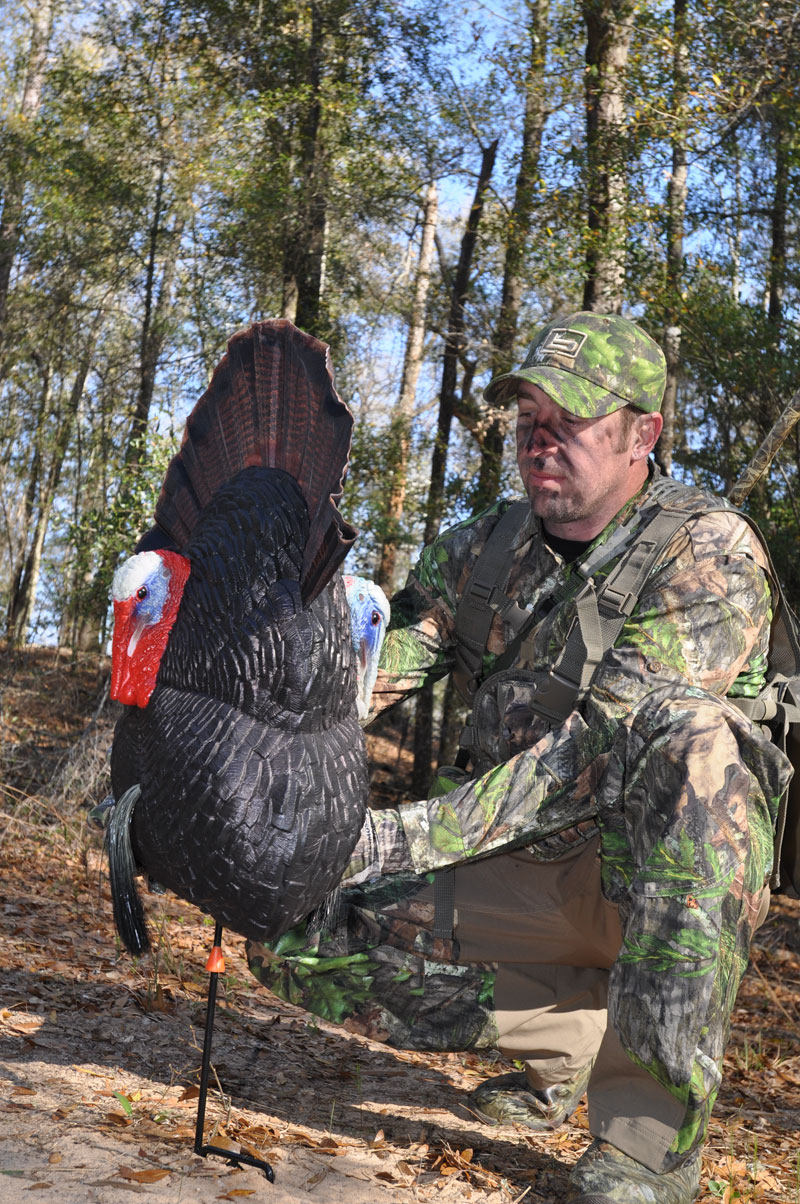
With wild turkeys becoming wiser by the season, hunters are looking for anything that can give them a bit of an edge.
To take smart, old birds, some Carolina hunters have turned to using decoys of various forms in different setups to lure old birds close enough for a sure shot.
Matt Fields of Chapin, S.C., a 34-year-old K9 officer with the Lexington County Sheriff’s Department, is a member of Avery Outdoor Products’ pro staff who has been hunting turkeys for 20 years. His 88-year-old grandfather, Roy Fields, once hunted turkeys on family property now part of the Savannah River nuclear plant site and Crackerneck WMA.
Randy Lambert, 66, of Barnwell, SC., worked for the USDA Farm Services Agency in Barnwell and Allendale counties before retiring. He has taken about 150 gobblers since he began hunting turkeys in 1979.
With turkey season in parts of South Carolina opening in March, Roy Fields teamed up with Lambert, and Matt Fields carried a visitor on an early season hunt in Barnwell County.
“We have some new decoys to test,” said Matt Fields. Well before daylight, he set out Avery’s Green Head Jekyll & Hide gobbler decoy, along with an Upright Jake and Upright Hen decoy. “They are so lifelike, it looks like they will start walking around, clucking, gobbling and strutting at any second.”
Decoys draw attention of turkeys
Lambert headed to a creek bottom where turkeys had been roosting, hunting 1,000 yards up the creek from where Matt Fields set up his decoys in an open stand of hardwoods that gradually sloped toward the creek.
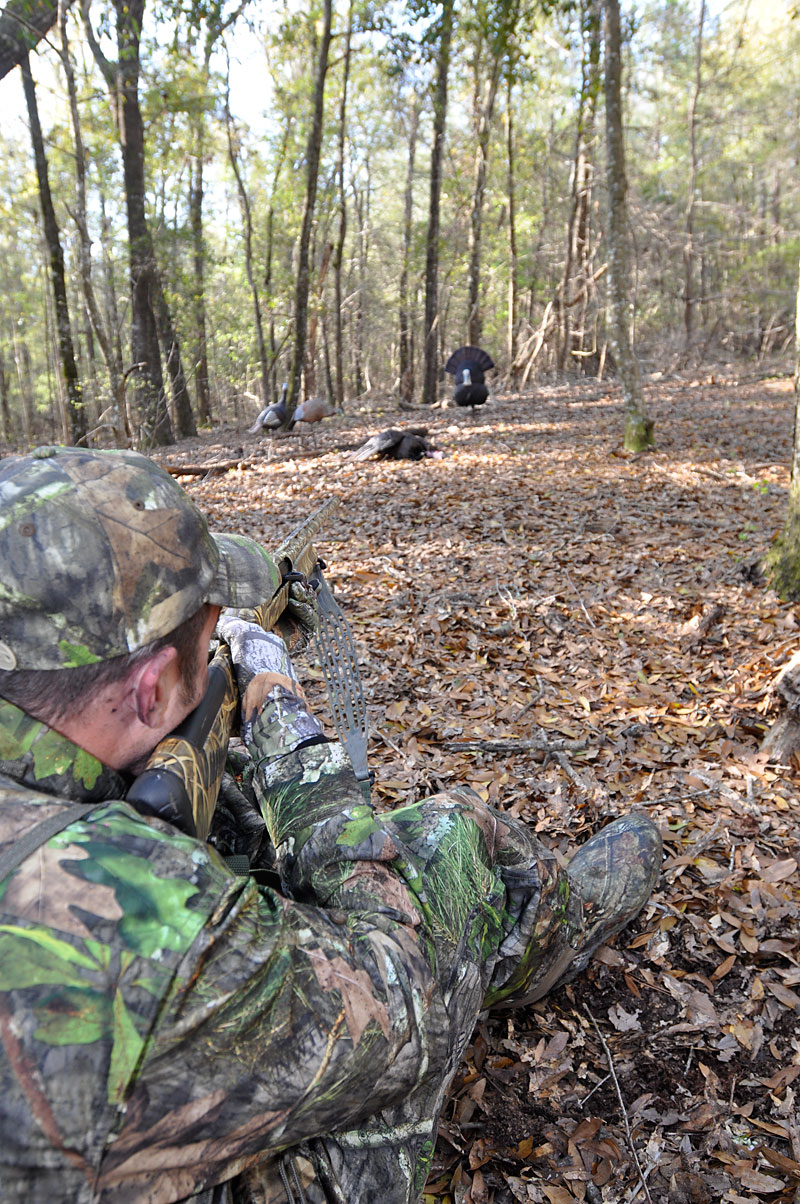
It wasn’t long before several turkeys gobbled from their roosts. Matt Fields wooed them with a friction call. And about 30 minutes later, two jakes came to the decoys, gobbling all the way. They worked the jake decoy the most, but also came within a few feet of the hen decoy before they lost interest and left. They stayed away from the gobbler decoy.
The next day, Matt Fields set up the same decoys in the same spot. At 7:30 a.m., a gobbler fired up behind him. He took a circuitous route of 600 yards, responding to calls, before he finally came close enough to see the decoys. Uphill and behind the decoys, he strutted, drummed and gobbled for more than 30 minutes. Eventually, he came downhill — unusual behavior for a tom. Convinced the decoys were real, he alternately trotted and strutted right up, and “got in the face” of the aggressive, “Hyde” side of the decoy. He fell to a single shot.
“After moving around where he could see both sides, he homed in on the Hyde side,” Matt Fields said. “He made his choice, took his chances and lost. He’s a big gobbler, too.”
The gobbler weighed 18 1/2 pounds, and had a 10-inch and a 7-inch beard. He sported a pair of 1 1/8-inch spurs.
Sure-Fire Decoy Setups
- Gobbler-Jake-Hen. This classic setup is made even sexier with the Jekyll & Hyde tom decoy. It sits on a plastic stake that allows it to turn slowly in the breeze, showing both sides of its face: the dominant red Hyde face and the subdued blue/white Jekyll face. An aggressive gobbler is more likely to approach the Hyde face. And a subordinate gobbler is more likely to approach the Jekyll face. An approaching gobbler often circles a setup. Therefore, if the decoy is not rotating, the gobbler should still spot the decoy face that provides the most stimulus and move in close.
The hen decoy provides a powerful attraction. However, in this setup, the gobbler decoy incites a dominance instinct. And the jake decoy invokes jealousy. Using only a lone hen decoy can backfire on the hunter. That’s because a gobbler desires the hen to approach him as he displays: gobbling, strutting, dragging his wing tips and spreading his fan. Adding the two male decoys helps to ensure that an approaching gobbler does not hang up beyond shotgun range.
- Gobbler-Receptive Hen. Avery’s Laydown Hen decoy can either appear as a hen that is simply resting or dusting or one that is receptive to breeding. The difference is as simple as adding a gobbler decoy.
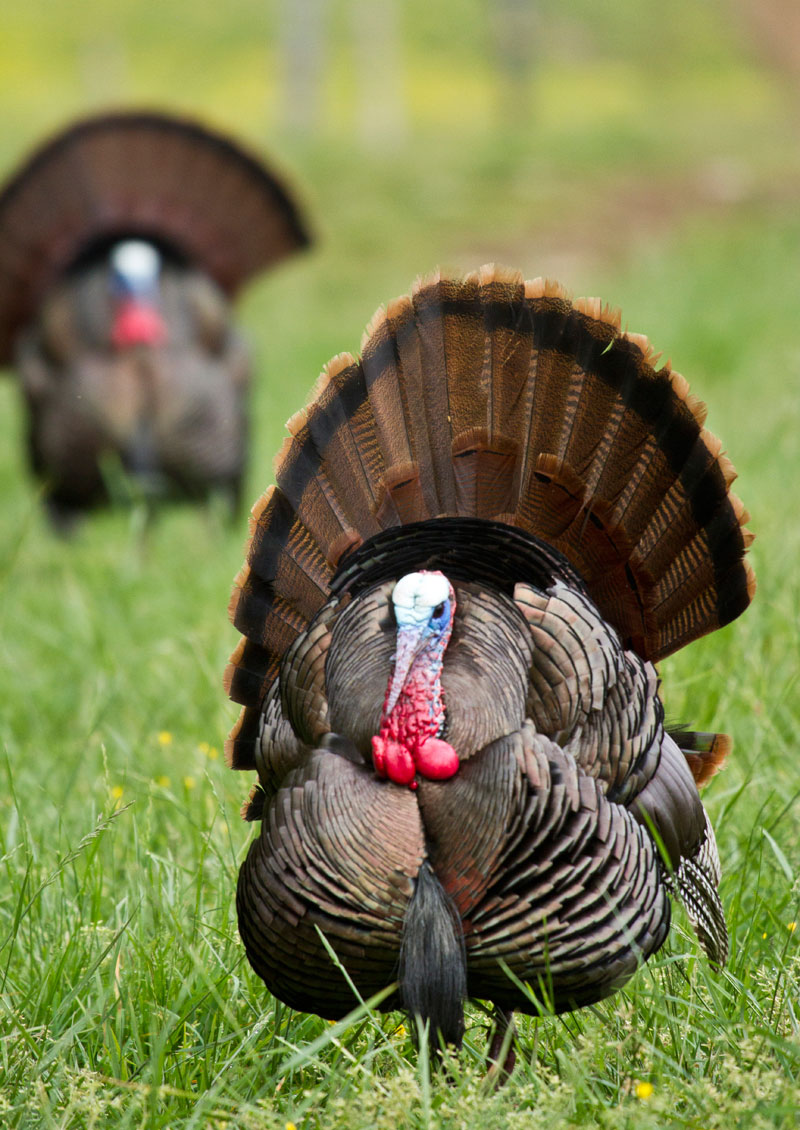
Positioning the gobbler decoy directly behind the hen shows she is ready and willing to mate. A dominant gobbler approaching this setup may come in at a dead run. If the hunter is calling, and a gobbler is answering then suddenly goes silent, it’s time to get ready to slip off the safety button.
Don’t forget about the jake
- Jake-Hen. The Upright Jake decoy paired with the Upright Hen decoy is one of the simplest to set up as well as easiest to carry. Two full-bodied decoys are less cumbersome than three or more.
Another advantage is their use on public land or any land where other hunters whose location is unknown may be trying their luck. The jake decoy is not as likely to attract another hunter who may become overly excited and approach too close.
This setup also incites jealousy instincts in an adult gobbler. It may also attract one or more jakes. Even if the hunter has no desire to take a jake, a live jake moving in close, gobbling and displaying while working the decoys, adds tons of attraction.
- Turkey Fans. Real turkey mounts make excellent decoys. However, more often, hunters prefer the convenience of using the fans of male turkeys. The Jekyll & Hyde comes with a slot for its own folding artificial fan. But it can be made more attractive by inserting a real fan. A gobbler fan is a good choice. But a jake fan can provide even more attraction to jakes or subordinate gobblers.
While Lambert does not use any type of blind, he often hides behind a gobbler fan. A fan can also be set on a stake in a decoy setup or as a stand-alone attraction at a distance, but still well within shotgun range.
Lambert has taken most of his turkeys by using fans.
“When a gobbler sees a fan, he’s usually going to respond in some way,” he said.
Carolinas turkey seasons
South Carolina
Private lands, Game Zone 1 and 2: April 1–May 10
Private lands, Game Zone 3 and 4: March 22–April 30
WMA lands statewide: April 1–May 5
Some WMAs may be more restrictive, see Spring Turkey Seasons on WMAs for specified hunt dates.
Limits:
Residents: 3 gobblers per season, no more than one per day, no more than one (1) from April 1-10 on private land and WMAs in Game Zones 1 & 2. No more than one (1) from March 22-31 on private land in Game Zone 3 & 4.
Nonresidents: 2 gobblers per season, no more than one per day, no more than one (1) from April 1-10 on private land and WMAs in Game Zones 1 & 2. No more than one (1) from March 22-31 on private land in Game Zone 3 & 4.
Some WMAs may be more restrictive.
North Carolina
Youth Season (under 18): Apr. 4–10
Regular Season: Apr. 11–May 9
Limits:
One bearded bird per day, two per season.


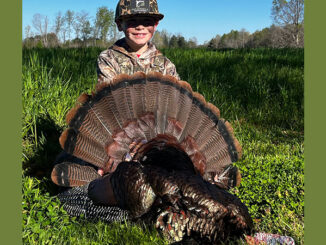
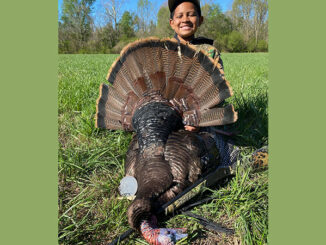

Be the first to comment